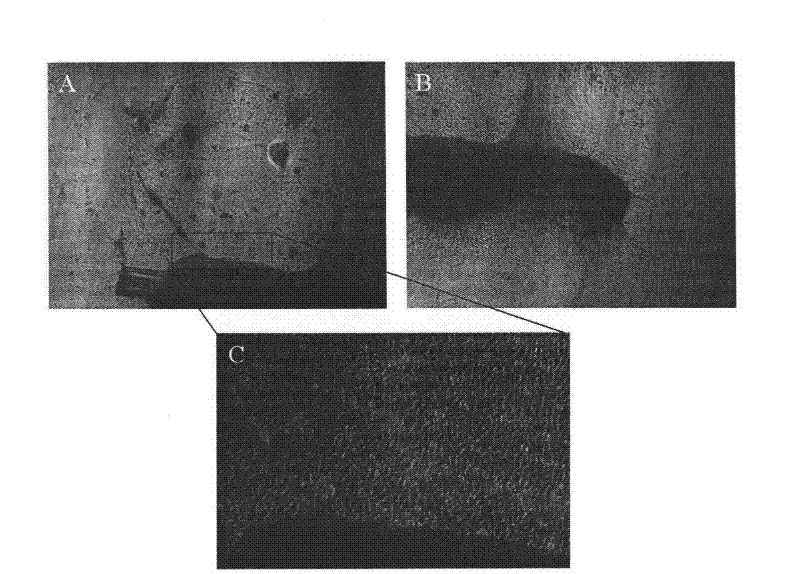Hair follicle stem cell separation culture method
A hair follicle stem cell, isolation and culture technology, applied to animal cells, vertebrate cells, artificial cell constructs, etc., can solve the problems of hair follicle stem cells not easy to survive, prone to apoptosis, and low clone formation efficiency, and achieve clone formation efficiency. High, maintains properties unchanged, and minimizes cell damage
- Summary
- Abstract
- Description
- Claims
- Application Information
AI Technical Summary
Problems solved by technology
Method used
Image
Examples
Embodiment 1
[0037] Example 1 : Isolation of Hair Follicle Stem Cells from a Single Rat Vibrissae Using Organ Culture
[0038] This embodiment takes a single rat tentacles as an example to describe in detail the method for isolating hair follicle stem cells provided by the present invention. For the specific technical route, see figure 1 . The feeding and use of experimental animals were carried out in accordance with the regulations of the Animal and Medical Ethics Committee of the Institute of Zoology, Chinese Academy of Sciences.
[0039] 1. Microdissection of rat vibrissae hair follicles
[0040] Take a small piece of adult Wistar rat (Institute of Zoology, Chinese Academy of Sciences) tentacles skin, disinfect with 75% alcohol for 3-5 minutes; under the stereoscope, use tweezers to clamp the isthmus of the tentacles hair follicles near the epidermis, and apply force toward the dermis Tear out the hair follicles; fix the hair follicles with a 29G needle, carefully scratch the derma...
PUM
 Login to View More
Login to View More Abstract
Description
Claims
Application Information
 Login to View More
Login to View More - R&D
- Intellectual Property
- Life Sciences
- Materials
- Tech Scout
- Unparalleled Data Quality
- Higher Quality Content
- 60% Fewer Hallucinations
Browse by: Latest US Patents, China's latest patents, Technical Efficacy Thesaurus, Application Domain, Technology Topic, Popular Technical Reports.
© 2025 PatSnap. All rights reserved.Legal|Privacy policy|Modern Slavery Act Transparency Statement|Sitemap|About US| Contact US: help@patsnap.com



